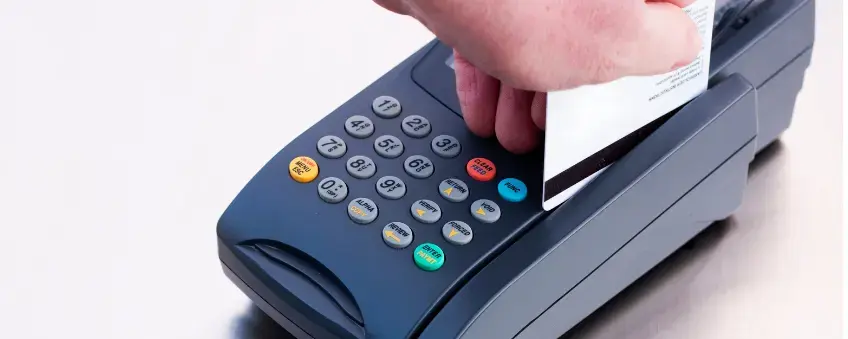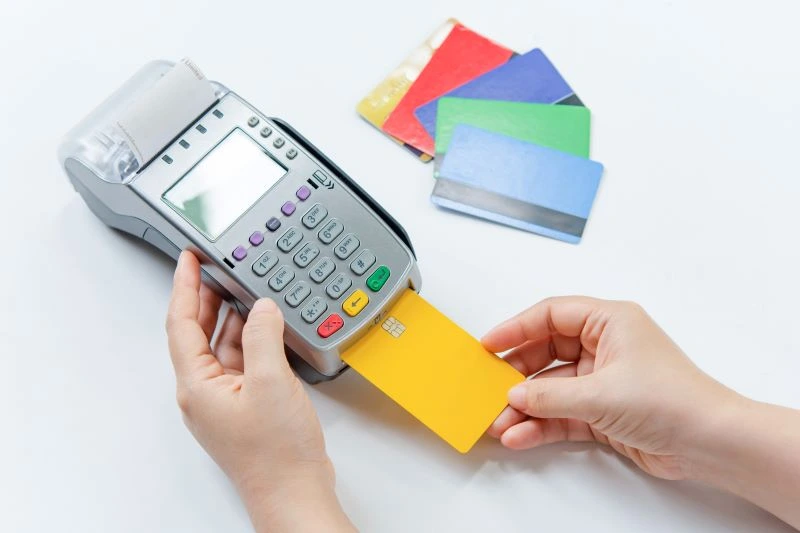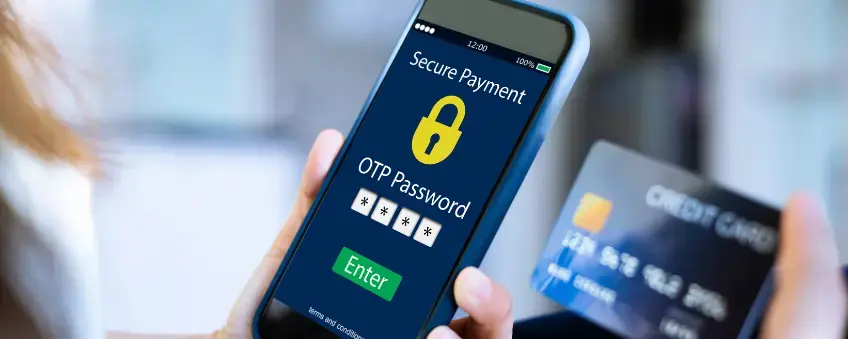Noncash transactions now account for more than 80% of payments, meaning businesses must offer convenient and affordable payment options to consumers. However, with a range of fintech companies entering the payments sphere in the last two decades, it can be hard to keep up with the latest payment options for small businesses. Merchants can now offer more than just standard credit card transactions; there are buy now, pay later (BNPL) services, QR code payments, cryptocurrencies, contactless transactions, and a range of other modern payment tools.
Still, while this flexibility offers various benefits to both consumers and merchants, it can be confusing and costly without the necessary knowledge. Many modern payment providers charge excessive payment processing fees and offer services businesses don't require. Navigating the payment landscape correctly can help your business find the most suitable payment platforms.
This guide explores how to accept payments, the most popular payment methods, tools your business requires to accept credit card transactions, fee pricing models, and other related topics. Read ahead to explore all the payment options available to your business!
Keys to Start Accepting Payments
Most businesses can no longer rely on cash-only payments. More than 40 percent of Americans claim they don't use cash to make a single purchase in a typical week. Therefore, merchants must partner with payment processing firms to handle credit card transactions, digital wallet payments, and other modern payment services. Understanding the various payment options, their price, and how they operate will help your business better decide which payment platforms are suitable for you.
Understanding How Payment Processing Works
So, how does payment processing work? When a customer visits a business and pays with a credit card or debit card, the merchant needs to have a payment processing partner to facilitate the transaction. While credit card transactions occur in a matter of seconds, there are multiple stakeholders involved in ensuring the transaction is valid. Let's explore the standard credit card payment process:
- A customer gives their credit card to a cashier to pay for a product or service.
- The cashier uses a point-of-sale system to identify the order total.
- The cashier scans the customer's credit card using a chip, magstripe, or contactless EMV reader.
- The merchant's payment machine sends a payment authorization request to its payment processor.
- The processor receives the information and forwards it to the customer's card association (i.e., Visa, Mastercard, American Express, etc.)
- Next, the issuing bank ensures the customer has sufficient funds and authorizes or declines the transaction. Insufficient funds aren't the only reason for a decline; other issues include expired cards, incorrect information, signs of fraud, and more.
- The issuing bank communicates the authorization or decline to the card association, acquiring bank, and merchant.
- Funds are removed from the customer's account and transferred to the business's merchant account.
This process varies depending on the type of transaction, the payment processor, and other factors. For example, to accept payments online, merchants typically allow customers to input their credit details into a payment gateway. The payment gateway performs various instantaneous security checks to prevent fraud and communicates the information with a payment processor. However, the underlying process of checking whether a customer's account has sufficient funds remains the same.
Consider How You Will Want to Accept Payments
Next, it's time to consider the best payment options for your business. Each business has its own payment needs, so there's no one-size-fits-all solution for processing credit card transactions. For example, if you operate a food truck, your business may require a mobile credit card reader with phone network capabilities. On the other hand, if your business sells products online, it will require a payment gateway for internet-based transactions.
Many payment providers offer multiple tools for different payment options. Developing an omnichannel payment platform is one of the best ways to ensure your customers have access to convenient options.
Most Common Payment Methods Accepted
Offering payment flexibility to your customers is essential. Evidence suggests consumers are in constant search for businesses with superior payment options—more than 60% of consumers have a higher chance of buying from a merchant with their preferred payment method. Let's explore the most common payment methods accepted by merchants in the United States:
Credit and Debit Cards
Credit and debit cards have taken the payment industry by storm due to the hassle-free nature of card payments. Card issuers offer convenient payments, spending tracking, payment insurance, and other unique features. Likewise, many credit card issuers offer rewards cards with air miles and other spending incentives, allowing consumers to benefit from shopping.
eChecks and ACH
eChecks and ACH payments involve bank-to-bank money transfers—the terms are used interchangeably. In the United States, most bank transfers occur over the ACH network. While this is a popular payment method for merchants due to its low processing fees, it's less convenient for many customers. Likewise, ACH transfers often take multiple days to settle, so there are no instantaneous payment benefits. This is a more suitable option for businesses working in the B2B sectors rather than the consumer sector. However, many businesses still offer eChecks and ACH payment options to customers, especially in the eCommerce world.
Buy now, pay later
Buy now, pay later (BNPL) allows customers to select a short-term payment plan during the checkout process. The type of BNPL payment plan available to customers varies depending on the provider. For example, some BNPL services charge zero interest and split payments into equal installments, while others offer a variety of interest and no-interest payment plans.
Invoicing
While modern invoicing tools often allow customers to pay with credit cards, receiving money via bank transfer is also possible. This can be a huge advantage for businesses wanting to lower processing costs, as ACH transfers are often much cheaper than standard credit card payments. There are also many digital P2P money transfer services and digital wallet services offering invoicing to customers. Some accounting software products also incorporate invoicing options to make it simple to bill clients, track payments, record accounts receivable, and more.
Cryptocurrency
With the introduction of Bitcoin just over a decade ago, cryptocurrency has quickly become a popular topic of conversation in the payment industry. While there's no doubt blockchain technology created an interesting method for settling secure transactions, Bitcoin and many cryptocurrencies are also characterized by high processing costs due to the "mining" required to settle transactions. However, there are now many affordable cryptocurrencies with extremely low transaction fees, making it possible to accept crypto without incurring large processor commissions. Still, as cryptocurrency is notoriously volatile, it can be risky to use this as a primary payment method.
Contactless Payment and QR Codes
Last but not least, contactless payments and QR code payments have revolutionized how customers purchase products. With contactless payments, customers use smartphones, EMV-chip credit cards, smartwatches, and other devices to connect with near-field technology-enabled hardware. Instead of inserting a card and inputting a PIN or signature, customers simply tap their device or card, and the transaction decision occurs instantly. In most cases, there is an upper limit on the value of a contactless payment as it doesn't have the same security as a PIN transaction.
With QR code payments, merchants can produce a QR code that links to a payment portal, streamlining the process of accepting digital payments. This is a popular option with restaurants wanting to speed up the checkout process. Customers can easily scan a QR code at the table to pay their tab. Likewise, for fundraising organizations, QR codes are convenient for receiving donations from flyers, banners, and promotional materials.
Different Ways to Accept Payments
There are now many ways to accept payments from customers. Depending on your industry, size, and other factors, having multiple payment options is recommended—it increases convenience for customers and helps avoid lost sales. Below, let's explore the most popular ways of accepting payments:
Online
It's no secret that eCommerce continues to play a growing role in the world's consumer economy. Research suggests eCommerce sales will grow 10.4% in 2023. If your business wants to sell products and services on the Internet, you must have a seamless credit card processing platform to accept payments online.
Online payments are technically card-not-present transactions, as the merchant doesn't handle the physical card during the transaction. Unfortunately, this makes online transactions prone to fraud and chargebacks. Various chargeback-prevention tools are now in use to help merchants identify scammers before processing transactions.
In Person
In-person transactions often have lower processing fees than other forms of payment. As in-person payments require a physical card with a PIN or signature, they are less prone to fraud. To accept payments in person, most businesses use card readers and other hardware to process transactions. This may include card readers with magstripe readers, chip readers, near-field communication technology, and more.
Over the Phone
Accepting credit card payments over the phone is a relied-upon payment option for businesses seeking upfront payments on products and services. For example, if a customer is placing an order for collection, a business can require upfront payment to avoid the risk of a no-show. So, how do you take an over-the-phone payment without a physical card? Virtual terminals!
A virtual terminal allows your business to input a customer's credit card details into a web browser and process payments. This is commonplace with businesses seeking over-the-phone and email payments. However, as it's a card-not-present transaction, it usually costs more than a standard in-person payment.
Alternative Options
While online, in-person, and over-the-phone payments account for most merchant payments, there are some alternative options to consider:
Mobile Payments
Mobile payments are growing increasingly popular. Apple Pay, Samsung Pay, Google Wallet, and other popular mobile payment options make it simple and secure to accept payments from a customer's phone. With contactless mobile payments, a customer's device can communicate with near-field communication POS systems (as with contactless cards). However, mobile payments are even more secure, as they usually require two-factor authentication, including a passcode, Face ID, or other forms of verification.
Mobile payment systems also work on websites. Customers store their payment information on their phones and can pay using their digital wallets as they check out on an eCommerce store. Again, this usually requires two-factor authentication, so it's both a faster and more secure online payment method.
Recurring Payments and Subscriptions
Recurring payments offer businesses access to a continuous revenue stream. Merchant service providers offer a range of ways to offer recurring billing for memberships, subscriptions, and a variety of other recurring payment business models.
CRM
Customer relationship managers (CRMs) make it easy to manage individual customer profiles, offer loyalty schemes, track spending, and more. Some CRMs also allow you to store customer payment data and process payments, making it simple to charge repeat customers for products and services.
Tools You May Need for Accepting Payment
The modern payment landscape offers a range of useful tools for accepting credit card payments. However, not all businesses will require a full suite of payment methods, so it's critical to understand how each option differs. Below, let's explore the tools you may need for accepting payments and how to decide which ones are relevant to your business:
1. Card Terminals and POS Systems
Previously, POS systems were large, clunky machines. Likewise, many of the best POS systems were custom-built specifically for an individual POS software provider, so there was no ability to switch to a new POS platform with your existing hardware. However, mobile POS software products are now available for smartphones and tablets, making it simple to use your own hardware to process credit card transactions. These mobile options also make it easy to process POS payments on the go!
2. Payment Gateway and Online Shopping Carts
Payment gateways act as online cashiers for your digital purchases. They securely process your payment information, validate it, and ensure your money safely reaches the seller. Think of them as the digital tellers of the eCommerce world, making sure your transactions are smooth and secure. Customers input their information into the payment portal and the rest of the transaction process happens instantly.
Shopping carts are also a useful tool for online shopping. With shopping carts, customers can add multiple items to a cart before checking out, ensuring there's no need for individual transactions. Some online shopping carts now offer a range of additional benefits to merchants, such as abandoned cart metrics, follow-up emails, and other tools for increasing conversion rates. Considering almost 70% of online shoppers abandon their carts, it's important to use an online shopping cart software with tools to improve conversions.
3. Virtual Terminal
Virtual terminals simplify accepting credit card payments over the phone or via email. A virtual terminal is a software program for manually inputting a customer's card details—it's essentially a payment gateway built for internal use. If your business wants to require prepayment for goods and services, a virtual terminal makes it possible for customers to pay without visiting a physical location.
Evaluating the Costs of Accepting Payments
There are various pricing models available from payment providers. The pricing model most suitable for your business will depend on a range of factors, including payment volume, preferred payment method, the types of card brands your customers favor, and other factors. Understanding the pricing models available to your business can help you save significant money over the long run. As you will see, some pricing models hide huge markups, resulting in unnecessary losses for merchants. Let's explore more below:
Interchange Plus Model
The interchange plus model is the pricing structure preferred by merchant account providers. With interchange plus pricing, payment processors charge a markup on top of the standard interchange fee. The interchange fee is the commission charged by issuing banks and card brands for the transaction. As card brands and issuing banks have varying interchange fees, the price your business pays for processing will differ depending on the cardholder's type of card and payment method.
While interchange plus pricing makes it more challenging to predict payment processing costs, it is traditionally much cheaper than other credit card processing pricing models. Likewise, as merchants have full access to the interchange fees and markup costs, it provides the most transparency, making it easier to decide which credit card brands to accept.
Flat-Rate Structure
The flat-rate pricing structure has grown in popularity with the emergence of many payment service providers (PSPs), such as Stripe and Square. With flat-rate pricing, merchants pay the same processing costs regardless of card brand. So, whether your customers prefer American Express, Visa, Mastercard, Discover, or any other major card brand, your business will pay the same rate to process it. This makes it much easier to predict payment processing costs. However, while this is a simple pricing model to understand, it often hides significant markups. As merchants don't see the interchange pricing or other factors contributing to fees, it's easy for PSPs to hide how much they're charging businesses.
Still, while flat-rate pricing standardizes costs for the same type of payment, there will still be variations in costs for different payment methods. For example, most PSPs charge lower fees for in-person payments than card-not-present transactions.
Tiered Pricing
Tiered pricing is a hybrid pricing model that borrows features from both the flat-rate structure and the interchange plus model. With tiered pricing, your merchant service provider will charge payment processing fees based on pre-set tiers. Let's explore the three types of tiers:
- Qualified Transactions: A qualified transaction incurs the lowest processing fees. This type of transaction normally involves in-person debit card transactions, as this type of payment is less prone to fraud and cheaper.
- Mid-Qualified Transactions: A mid-qualified transaction is the second cheapest transaction option. This tier often includes rewards cards, credit cards, keyed-in payments, and payments not processed within 24 hours of authorization.
- Non-Qualified Transactions: A non-qualified transaction is the most expensive transaction tier. It involves card-not-present transactions, payments with missing information, and other high-risk transactions.
Tiered pricing provides merchants with predictability over payment processing costs but also offers money-saving opportunities by not billing cheaper card brands at the same rate as premium card brands. Still, while tiered pricing has benefits, it shields customers from the full savings on the offer via interchange plus pricing.
Best Practices for Secure Payment Solutions
Maintaining secure payment solutions is essential if your business wants to avoid fraud losses and other potential payment issues. Modern payment processing simplifies customer payments but increases susceptibility to scams involving stolen credit card information.
Utilize Anti-Fraud Tools: First, it's essential to utilize anti-fraud tools, especially if your business accepts a large volume of online transactions. Online transactions are prone to fraud because the individual making the purchase does not require a physical card—they may have access to stolen credit card details. While anti-fraud tools are not foolproof, they offer an extra layer of protection against fraud. Tools like CVV checks, address checks, and IP address checks to thwart fraudulent transactions effectively.
Develop a Chargeback Dispute Strategy: Chargebacks create a series of issues for merchants. First, they're expensive and often result in losses for businesses. However, the larger problem is that an excessive number of chargebacks may result in the cancellation of your merchant agreement with your payment processor. High chargebacks lead to card brand lawsuits, causing payment processors to shun businesses with excessive payment disputes. However, many chargebacks occur due to scammers looking for refunds on legitimate purchases. If you believe a customer is a legitimate cardholder, disputing the chargeback can help you recuperate losses, avoid refunds, and improve your chargeback record.
Partner with a High-Risk Merchant Account Provider: Lastly, if your business operates in a high-risk industry, it's particularly prone to fraud attempts. Fortunately, there are high-risk merchant account providers specializing in helping businesses in risky industries navigate the payment landscape. Not only do high-risk merchant account providers offer payment services not available from traditional merchant service providers, but they also offer industry-specific tools, increased security features, and other benefits to help create more secure payment solutions.
Concluding Thoughts on Taking Payments
Creating a dynamic, omnichannel payment platform is the best way to offer flexibility to your customers. Making it easy to purchase your products or services can greatly improve your conversion rates and increase revenue. Remember, when it comes to payments, the customer is always right!
Still, even with all the options available to small businesses in 2023, accepting payments can be a challenge. Partnering with a merchant service provider makes the process much less stressful. A dedicated merchant account provider will offer support and guidance as you set up your new payment infrastructure securely and efficiently—they'll help you choose the payment solution most suitable to your needs. So, what are you waiting for? Contact a merchant service provider today to unlock the world's most powerful payment tools!
FAQs
Aside from cash payments, most forms of payment carry processing fees. The only feasible way to access "free payments" is to pass the processing costs onto your customers. No-fee payment processing adds a surcharge to credit card payments to ensure the merchant doesn't pay any processing fees. However, it's not very popular as it can damage customer sentiment, and its legality varies from state to state.
The easiest way to accept payments depends on a variety of factors, including the setting (i.e., online, in-person, etc.), the payment amount, the hardware your business can afford, and more. Fortunately, most modern forms of credit card processing prioritize ease of use. An example of a convenient tool for accepting in-person payments is a contactless chip reader. With contactless payments, your customer simply places their card near the chip reader, and the payment processes without any need for a PIN or signature. For online payments, a payment gateway is an extremely easy way to accept payments. Payment gateways allow customers to input their card details in a matter of seconds—and most gateways provide instant security checks to reduce the chances of chargebacks and fraud.
While building an online storefront is one of the most convenient ways to offer customers an online payment portal, it's not the only route available to business owners. Many merchant service providers offer a range of options to accept payments online, including payment links, QR code payments, and more. Most of these alternative online payment options redirect a customer to a payment portal where they enter card details and billing information. In some cases, the business can customize a third-party payment portal to include its branding and color schemes.
While a merchant account is one of the best options for accepting reliable, low-cost payments, it's not the only choice available to business owners. Many payment service providers (PSPs), such as Square and Stripe, offer access to credit card processing without a dedicated merchant account. Instead, PSPs group multiple merchants onto a single merchant account to streamline the signup process and reduce underwriting requirements.
Likewise, digital wallet providers, such as PayPal, make it easy to facilitate peer-to-peer money transfers, invoices, and more without a merchant account. However, while PSPs and digital wallets make accepting payments without a dedicated merchant account possible, they come with a few disadvantages: higher processing fees, less account reliability, and lower support quality.
If your business needs to accept an in-person credit card payment without a machine, it can use a virtual terminal to input credit card details into a browser-based payment portal manually. Also, if you develop an online store, you can direct customers to checkout online. There are now many modern eCommerce platforms, such as WooCommerce and Shopify, making it easy to build online stores and set up online payment processing. However, if your business plans to accept in-person transactions routinely, investing money into a card reading machine makes sense.






